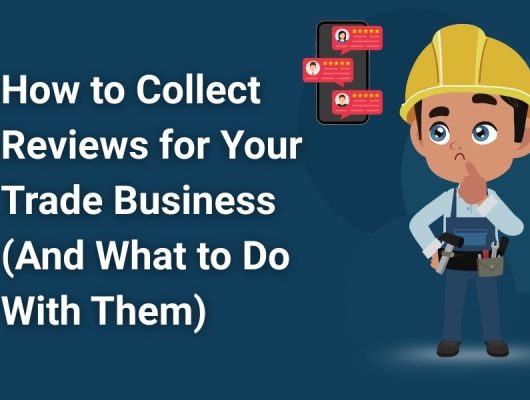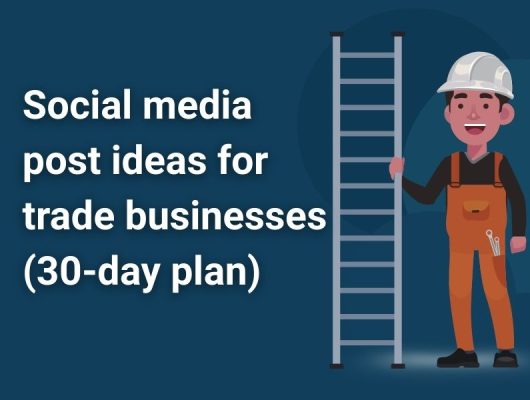If you’re already busy on the tools, sending out emails might not seem like a priority — but done right, email marketing can keep you front of mind, build trust over time, and generate repeat work without constantly chasing new leads.
Topics covered:
- What email marketing actually is
- Why it works so well for trades
- What types of emails you can send
- Tips for doing it right
- How to get started quickly
- When email marketing isn’t the right fit
What email marketing actually is
Email marketing isn’t just for online shops or big corporations. At its simplest, it’s about staying in touch with people who already know you — past customers, enquiries that didn’t convert, or people interested in what you do. You’re not spamming anyone, and you don’t need a huge mailing list. It’s about building relationships and staying visible, especially when work slows down.
Done well, it’s a low-cost, low-effort way to remind people you’re still around, introduce new services, or give helpful tips that keep them engaged with your business.
Why it works for trades
People don’t always need a plumber, builder, or electrician today — but they probably will soon. And when that day comes, you want them to remember your name. Email helps with that.
Here’s why it works so well for trade businesses:
- Stays personal — you’re reaching people who’ve used you before or expressed interest
- Builds trust — regular updates show professionalism and reliability
- Promotes repeat work — especially for services like annual checks, maintenance, or upgrades
- Encourages referrals — a well-timed email can remind someone to pass your details on
- Cheaper than ads — once a list is built, it costs next to nothing to send emails
What types of emails you can send
You don’t have to become a full-time content writer. Just send things your customers might actually care about — practical, friendly, and helpful.
Here are a few examples:
- Seasonal reminders – boiler servicing in autumn, garden upgrades in spring
- New services or offers – let people know when something changes
- Customer updates – show off a recent job or case study
- Helpful tips – simple advice that saves customers time or money
- Follow-ups – stay in touch with past customers after a job’s done
You can even set up automated emails so they go out at the right time with no extra effort.
Tips for doing it right
You don’t need to send emails every week — but you do need to be consistent and relevant. The key is to keep it short, useful, and clear.
- Use a proper email platform like Mailchimp or Mailerlite — don’t send bulk emails from your Gmail
- Write like you speak — plain, friendly language works best
- Add a strong subject line — if it’s boring, no one will open it
- Make it mobile-friendly — most people check email on their phones
- Include a clear call to action — even just “Get in touch if you need a hand”
How to get started quickly
Start small. If you’ve got a list of past customers or people who’ve enquired in the past, that’s your audience. Ask new customers if they’d like to receive the occasional update or tip — most will say yes.
Then:
- Choose a simple email platform
- Write your first email (even if it’s just a friendly check-in)
- Send it to your list and track who opens it
- Build from there — one step at a time
We also cover this in our digital marketing training, so if you’re not sure where to begin, we’ve got you covered.
Choosing the right email platform
Using a professional email platform makes the process far easier and helps you stay compliant with GDPR. You’ll also get access to features like email templates, contact lists, automated follow-ups, and open rate tracking. Here’s a quick comparison of some of the most popular options:
| Platform | Best For | Free Plan | Ease of Use | Notable Features |
|---|---|---|---|---|
| Mailchimp | Beginners and small mailing lists | Yes | Easy | Drag-and-drop editor, automations |
| Mailerlite | Simple automation and newsletters | Yes | Very easy | Clean interface, landing pages |
| Constant Contact | Larger or growing lists | No | Medium | Surveys, integrations, support |
| Sendinblue | Transactional and bulk emails | Yes | Moderate | SMS options, flexible pricing |
| HubSpot | Marketing + CRM combo | Yes | Moderate | CRM tools, detailed tracking |
For most small trade businesses, Mailchimp or Mailerlite are ideal starting points. They’re user-friendly, free up to a certain number of contacts, and don’t require any coding knowledge. If you’re planning to grow or integrate email into a broader marketing strategy, platforms like HubSpot or Constant Contact might be worth exploring later on.
When email marketing isn’t the right fit
If you’re constantly booked out, don’t offer repeat services, and rarely get enquiries through your website, email marketing might not be top of the list. In those cases, your time might be better spent on improving your website or local SEO. But for most trades, especially those who want to build a loyal customer base or win more maintenance work, email can be a smart long-term tool.







